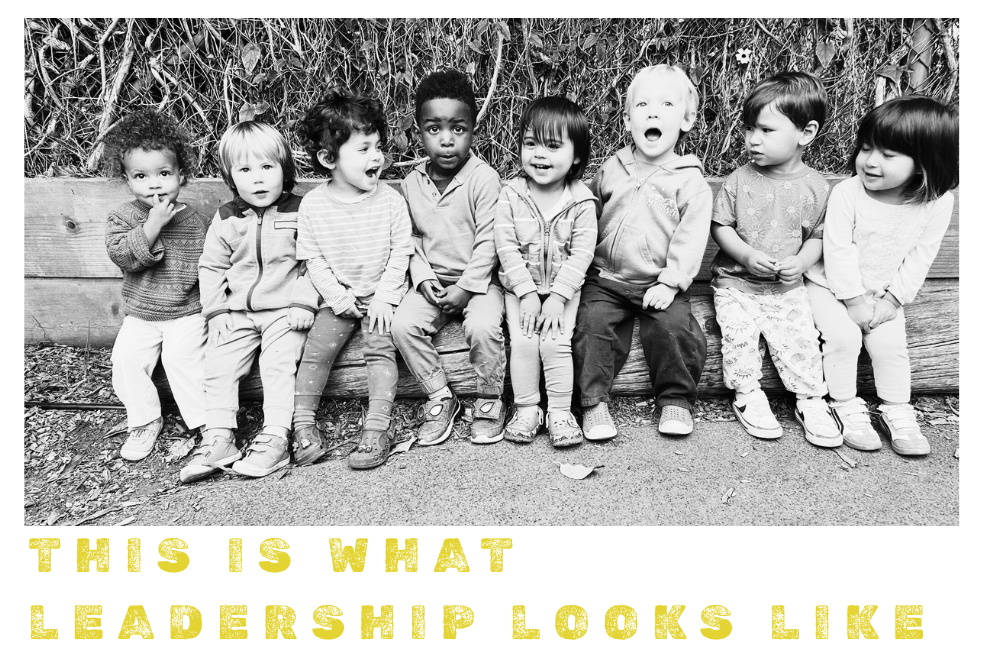A reflection by Eve Uberman
A trusted toddler clears their plate after snack.
“You did it!” exclaims 1 year old Evelyn after working for more than 5 minutes to put their 2 legs into the 2 leg holes of a pair of pants. We assume that small people need our support to care for themselves by doing for them. But truly serving the child is not doing things for them. Rather, as Dr. Maria Montessori describes, it’s helping them to help themselves.
Dr. Montessori’s pedagogy highlights the impacts of skill building, independence and focus on the self-esteem and motivation of children. The classroom leadership of Montessori teachers is filled with presentations of materials and the trust in children to practice the lessons, notice and correct their own mistakes and to share the experiences of presenting materials with other children. Next, the teacher sits down with their hands in their lap or watches with hands behind their back, as the child practices their new skill. True mastery happens when we practice what we’ve learned, correct our own errors and share our processes with others. This is precisely what Nia House children do! Nia House gives space for children to observe their own practices. Classroom lessons include not only Montessori materials, but also lessons of grace and courtesy, sharing care of others in tender and responsive ways- necessary skills of true leaders.
These two find comfort in one another.
Morcos, a 2 year old came brushing by and hurriedly arrived to hold the hand of Amir, a brand new 1 year old who needed comfort. Not only do young children have the agency to help themselves, acting as leaders in their toddler classes, they also have the capacity to care for and lead others within their school and family communities. In this simple gesture, Morcos demonstrated peer leadership skills with sensitivity, compassion and care – qualities that we can cultivate from the earliest days of our lives through adulthood.
Map making is inspiring and collaborative work.
“Help me help myself” defines the relationship between every Montessori teacher and each of our students here at Nia House. Children are mastering their self-care routines, experimenting with leadership in their classrooms, and supporting those who are still learning about self care. Daily, I observe two-year-olds helping 18 month-olds put their shoes on and 3 year olds offering their leadership as lunchtime table hosts, ensuring that each child at the table has a full place setting of a fork, spoon, knife, napkin and a cup of water. The host works to promote peaceful lunch practices and even scrubs each table clean after lunch. A Nia House 5 year old, Nouri, gives a presentation on map-making to a younger peer. This friend found inspiration from Nouri’s presentation and worked tirelessly for several days afterwards to create a map of South America, complete with the names of each country.
The Bank Game gives these two the chance to communicate and think together as they build numbers up to 9000!
“Help me help our school” describes the relationship between our incredible Nia House Board of Directors and our staff. As a staff-person myself, I look to our Board of Directors to hold the weight of the organization, uphold our incredible mission, and to ensure that we have the finances in place to make it all happen.
From mid April through early August, I stepped away from the job of school leadership to focus on healing from a breast cancer diagnosis. Wrapping up my desk for an undetermined amount of time was nothing short of a challenge. Unsurprisingly, the caring leadership of Stacey Wood and the entire Nia House teaching team was phenomenal, and with their love, and upon their strong vision for Nia House, the organization continued to thrive without me. Though this experience was personally challenging, the Nia House team had the opportunity to show their true commitment to their own personal leadership here at school. I have expansive gratitude for the entire Nia House staff and board, and this gratitude gives me energy and excitement for my ongoing school leadership.
An elder leads a new Primary student in a presentation of window washing.
Beyond our team at school, YOU help make Nia House the model of leadership of which we all dream. Your loving gifts of time, your trust in the staff and the board, your notes of encouragement and support, reflections on how Nia House experiences of parenting and learning have impacted your teenagers and young adults, and your financial support all contribute to giving Nia House the fuel it takes to grow minds, bodies and spirits with integrity and leadership strength.
We remain committed to our vision to cultivate “future leaders in a world wherein each person carries the values necessary for peace, harmony and equality.” Together, let’s honor this vision and continue to lead by the best examples possible.






